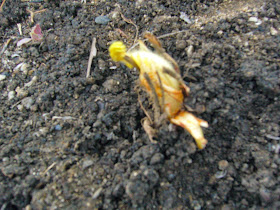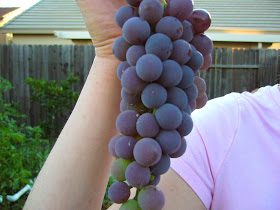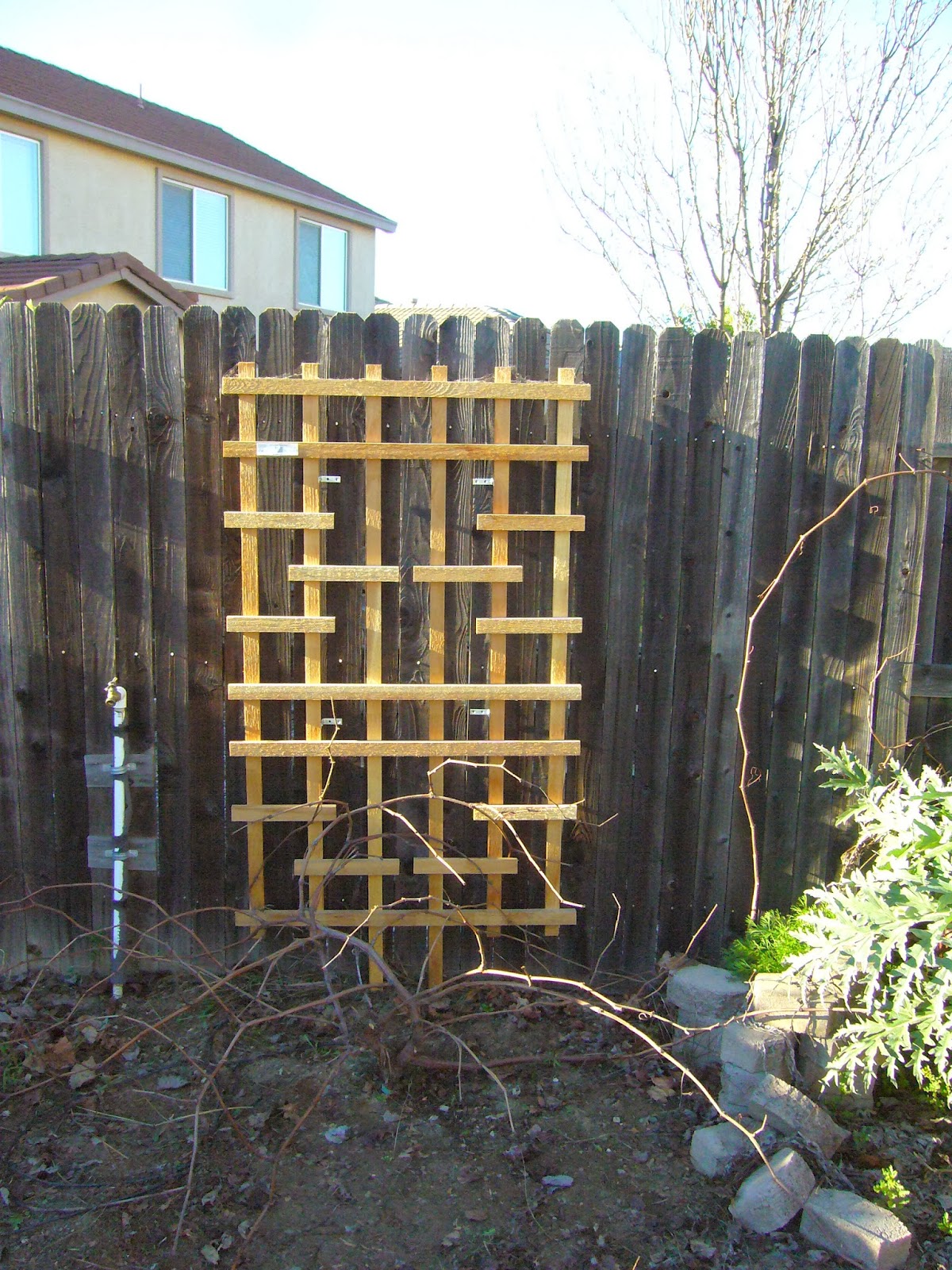 |
| Emerging Strawberries-Bird Back 40 |
And you thought Chicken soup was the only good thing for the soul? Guess again. Strawberries -- especially home grown berries -- are pretty darn good for the soul as well. I should know -- since fresh berry patches grace the Bird Back 40 -- providing us with a bounty of fresh berries from mid-spring through June.
Why plant strawberries? The most obvious answer is "why not?" Strawberries are a wonderful addition to any backyard -- and you can grow a lot of berry with a small bit of room. In this particular case? A raised bed holding fruit trees is also doing double-duty as a strawberry patch. As it turns out -- fruit trees and strawberries work quite well with one another.
 |
| Strawberry Plants in the Apple Patch |
This is a tip that the wife that is Venus and I learned one adventurous Saturday afternoon during a class taught by Folsom City Arborist Ken Menzer. A lot of great ideas came out of that class -- some of which worked and others (blueberries) did not. But his advice to plant strawberries at the base of fruit tree plantings was spot on. Leaves of these trees help shelter tender berry plants from blazing afternoon sunshine, while the berries open up cracks in the soil allowing water and other nutrients to reach fruit tree roots.
The pairing just works. Another advantage to this tandem is strawberry plants choke out all weeds. I haven't been required to weed the berry bed for years.
 |
| Emerging Strawberries in the Pear Patch |
It's done just fine for the apple trees we planted four years ago in a side yard of the Bird Back 40. This apple "patch" as I call it also holds the tastiest apple on the planet -- bar none: The Honeycrisp. The raised bed that the trees are planted in is dotted with a collection of Albion and Chandler strawberry plants.
Although they look productive -- this was yet another gardening mistake on my part. If you Google the terms of "popular strawberries to plant in California," up jumps a number of lists of strawberry plant recommendations. At the top of those lists? The number one plant for California gardens? The recommendation is the "Albion" strawberry.
 |
| Shuksan Strawberries |
And so -- four years ago -- Bill Bird sat at his computer as he is now -- and made yet another gardening blunder. I ordered a set of ten Albion plants and ten Chandler plants from Sakuma Brothers Farms in Washington. Why was this an error on my part? Because I jumped before reading the fine print. As it turns out -- Albion is a GREAT strawberry for California -- but only for certain areas. Albion berries grow and produce best in gardening zones 3-8. The Bird Back 40 is located in Zone 9A.
Bummers. No wonder the strawberry plants weren't as productive as I hoped. Although they've set a nice crop here in Year 4 -- at some point I will pull them out and replace them with a strawberry plant that loves Zone 9A. There are plenty of varieties that do quite well in the Sacramento area. I just have to choose the right one.
 |
| Shuksan Strawberry Plant (bare root) |
For this year's berry planting effort? I decided to read the fine print on the Sakuma Brothers website. In other words -- I found the berry for our backyard. It's called the Shuksan Strawberry -- and the bundle of 20 plants that arrived in the mail earlier this week have been planted here and there in the raised bed holding three pear trees.
Shuksan strawberries grow best in Zones 4-10 -- and are often found at those roadside strawberry stands that dot the Sacramento countryside during fresh strawberry season. They are good for fresh eating. They are good for jams and jellies. They are good for just about everything.
The Shuksan plants will grow through the spring and summer, sending out shoots and will take over every last inch of space in the raised bed holding our pear patch. Combine that with other strawberry patches dotting the Bird Back 40 -- and that's a lot of pie.
This is a bad thing?
I think not!



























